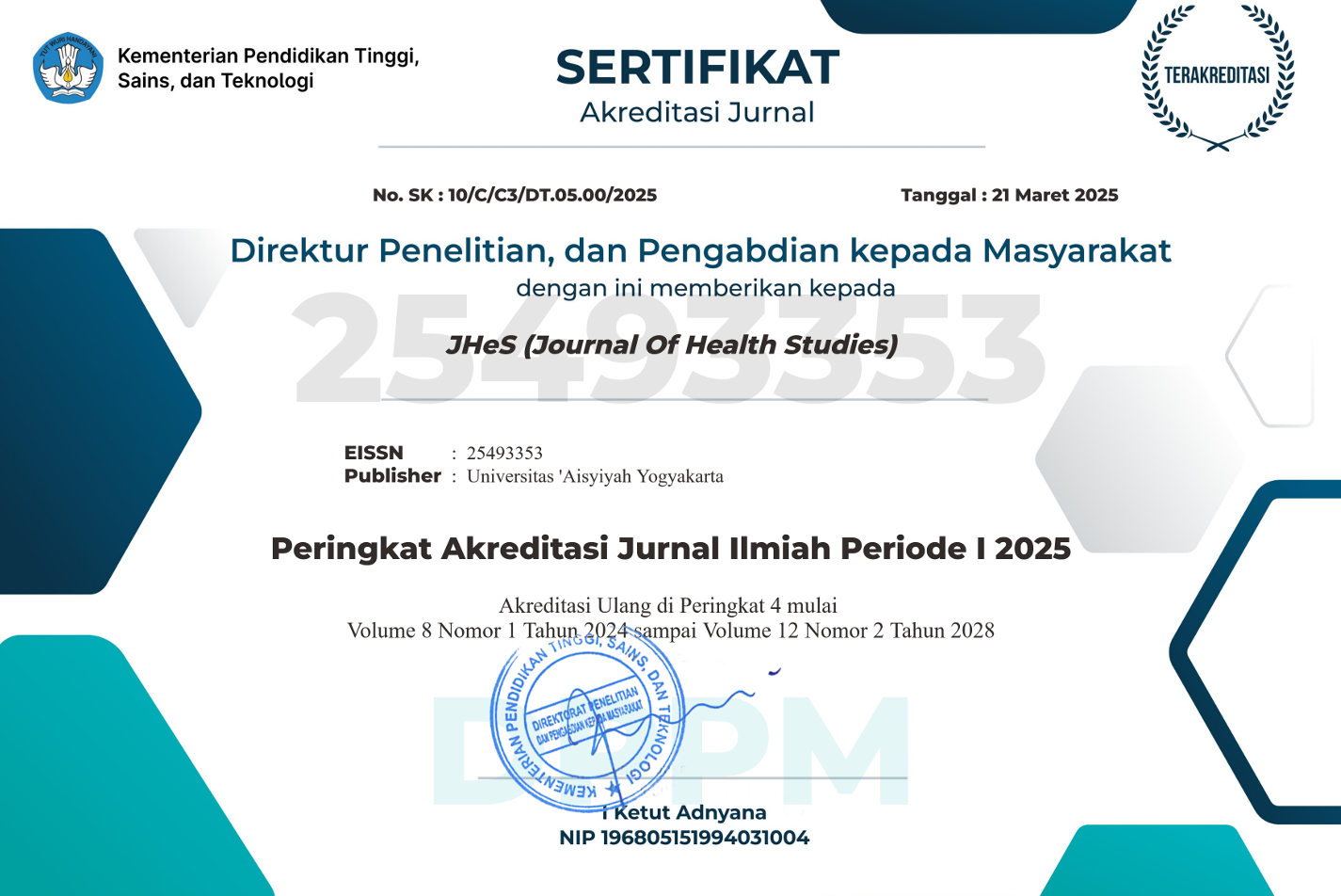Interprofessional collaboration meningkatkan pelaksanaan sasaran keselamatan pasien
DOI:
https://doi.org/10.31101/jhes.883Abstract views 2838 times
Keywords:
interprofessional collaboration, pelaksanaan sasaran keselamatan pasien, mutu keperawatanAbstract
Downloads
References
Adler, P., Riley, P., Knows, S.W., Signer J. 2002. Performance improvement capability: Keys to accelerating performance improvement in hospital. Los Angeles.
Aron, D.C & Headrick L. 2002. Educating physicians prepared to improve care and safety is no accident. Qual Safeety Heal Care, 11:168–73.
Borst J. Interprofessional collaboration : an introduction. 2008. Res Educ Publ, 32.
Brennan TA, Leape LL LN et al. 1991. Incidence of adverse events and negligence in hospitalised patients: results of the Harvard Medical Practice Study. N Engl J Med, 324(6):370-7.
Carlisle AW& caroline. 2008. Patient safety investigations: the need for interprofessional learning. 8: 22–33.
Cook R WD. (1995). Operating at the sharp end : the complexity of human error. Lawrence Erbaum Assoc. 1994;255–310
Ginsburg, L, Norton P. et al. 2005. An Educational Intervention to Enhance Nurses Leaders Perception of patient safety Culture. Heal Res Educ Trust.
Hanson, C.M., Carr, D.B.,& Spross JA. 2000. No Title. Philadelpia WB Saunders. 2nd ed (Advanced nursing practice.An integrative approach): 315–47.
Henriksen, K et al. 2011. Patient safety and quality: an evidence base handbook for nurses. Agency Healthc Res Qual Publ.
Hellings, Johan. 2004. Challenging Patient Safety Culture: Survey Result. Int J Health Care Qual Assur.
James C. Collins JIP. No Title. Calif Manage Rev [Internet]. 1995;37(Building a Visionary Company):1. Available from: http://cmr.ucpress.edu/content/37/2/80.abstract
Kohn LT, Corrigan JM DME. 1999. To err is human: Building a safer health system. Institute of Medicine, National Academy Press.
L.L. Leape. 1994. Error in Medicine. J Am Med Assoc. Human Error, 23:1851–7.
Mikelsen, Jane. 2006. Improving Patient Safety by Using Interprofessional simulation Training. J Interprof Care, 20: 507–16.
Rachmawati, Emma. 2011. Model Pengukuran Budaya Keselamatan Pasien di RS Muhamadiyah Aisyiyah Tahun 2011. Tesis.
Siagian S. 2006. Manajemen Sumber Daya Manusia. Jakarta: PT Rineka Cipta.
Quality A for HR and. AHRQ. 2003. Vols. 7-E005.
WHO. 2005. World alliance for patient safety. In: forward programme .
WHO. 2007. Nine Life Saving Patient Safety Solution.
Downloads
Published
Issue
Section
License
With the receipt of the article by the Journal of Health Studies Editorial Board and the decision to be published, then the copyright regarding the article will be diverted to Journal of Health Studies. Universitas 'Aisyiyah Yogyakarta as the publisher of Journal of Health Studies hold the copyright regarding all the published articles in this journal.
Journal of Health Studies is licensed under a Creative Commons Attribution-ShareAlike 4.0 International License.













